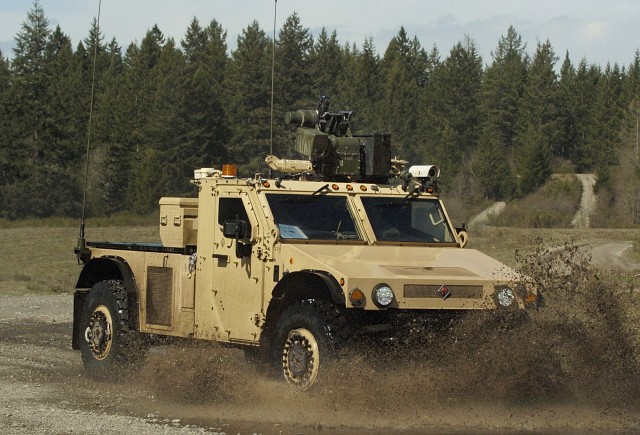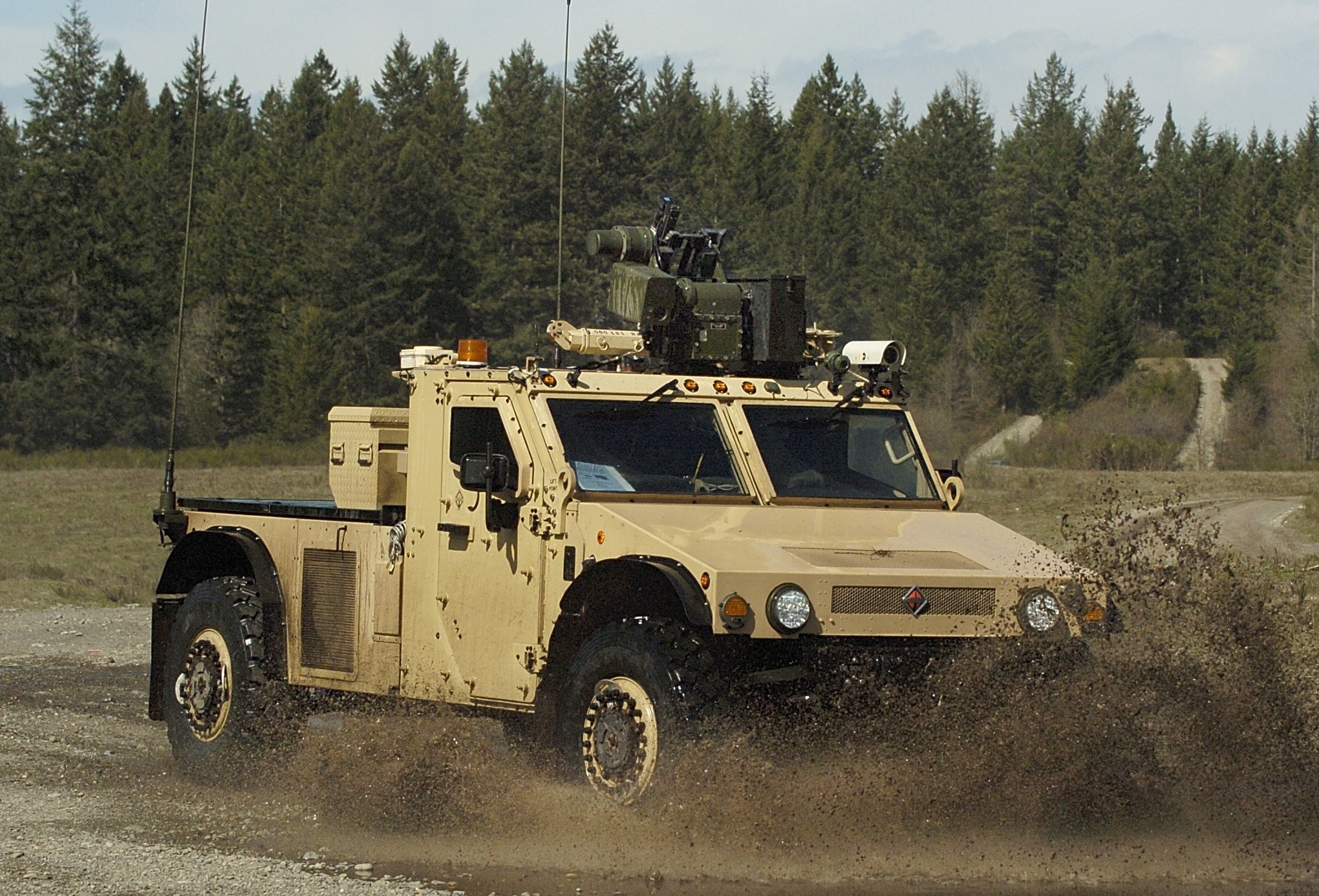FORT LEWIS, Wash. (Army News Service, March 30, 2007) - No matter how useful it is to hear about the capabilities of new equipment from manufacturers, defense contractors know most honest appraisals come from Soldiers.
Members of the 14th Engineer Battalion and the 5th Brigade, 2nd Infantry Division, have spent the last two weeks filling the ears of representatives from three manufacturers who came to post to solicit feedback about demonstration trucks as part of an advanced concept technology demonstration.
Lockheed Martin and International Truck and Engine Corporation brought joint light tactical vehicles bristling with prototype gadgets and features. A third company, Armor Holdings, furnished a pair of maneuver sustainment vehicles for evaluation. The MSVs came complete with touchpad-controlled cranes and fork lifts.
The prototypes are designed to replace those in the Army's fleet of tactical wheeled vehicles. But companies will never mass-produce the $10-million concept vehicles undergoing testing.
Feedback from the field will determine which of the high-tech features will survive. Assessments of Soldier feedback will allow the companies to produce what the Army needs without the expense of including features it doesn't want.
"We're finding out you need to know what the customer is looking for," said Dan Imhauser, Lockheed engineer. "That's what we're here for."
The Soldiers did their best Monday to accommodate manufacturers by challenging the vehicles and giving candid assessments. Responses among the Soldiers about all the vehicles and their capabilities were generally positive.
"I like them," said Pvt. Juancarlos Chavez, 402nd Brigade Support Battalion, of the Lockheed vehicles. "They drive so nice, just like a regular car."
Lockheed developed the truck's suspension based on a British design from Lotus Company, which received raves from 5th Brigade Soldiers.
"The way the suspension is set up, you don't feel much of the road," said Pvt. Shawn Sturgess, also of 402nd BSB. "With the air ride suspension, it's almost like driving a sports car."
Pfc. Michael Chermack, wheeled vehicle mechanic, liked best the adjustable ride height. "Everything is labeled," he said. "You press a button; it raises or lowers the truck to whatever height that's good for that terrain."
Its size is the Lockheed vehicle's strength, but also a weakness, according to Chermack.
"They made it capable of going fast and turning well, but the high silhouette raises the center of gravity," he said. "We had this thing in a good bit of mud and we were fish-tailing it. As soon as we got it in the mud, it started leaning and tilting all over the place."
Chermack echoed general concern about the hybrid engines in the Lockheed and International vehicles.
"We haven't come far enough in the hybrid technology to start using it on military vehicles," Chermack said. "They're having a lot of troubles with it. The batteries are draining really fast, and you have to keep the truck revved up real high to keep it going."
The International vehicle received similar kudos for ride and handling, but some Soldiers objected that the cab was cluttered. They were universally enthusiastic about the International's ability to four-wheel steer and move at angles, to "crab walk" sideways.
"We just got out of an insanely thick forest," Chermack said. "We weren't even going down any path. There were downed trees everywhere, and we used the four-wheel steer to go around it."
The International vehicle's hybrid engine, Sturgess said, is especially efficient and quiet.
"It's got a four cylinder instead of a V8," he said. "The motor is actually set in the back, and the batteries are in the front so you don't get as much sound coming through the cab."
Soldiers are finding similar strengths and weaknesses in the MSV by Armor Holdings. "It's got a really smooth ride," said Sgt. Jason Kriess, 14th Engr. Bn., "a lot less bumpy than a HEMMET."
He liked the crane's automatic controls, but found the vehicle's bells and whistles unnecessary.
"I didn't think the touch screen controls were really necessary for the driver," he said. "I wasn't too crazy about the digital gauges, either. There was quite a little bit of delay and jumps between speeds."
The manufacturers built vehicles for themselves, as well as those for the Army to test out feedback immediately while Soldiers continued their evaluations.
"We can play with this one while the Soldiers are out doing things," Imhauser said. "They're the ones who give us what's really good or bad. A lot of these sergeants have done their time in Iraq. It gives us a real perspective that we can take back to our engineers."
(Don Kramer writes for the Fort Lewis "Northwest Guardian.")


Social Sharing